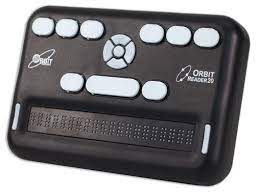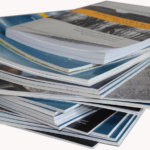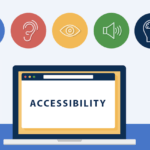Reading with eyes, ears and fingers
If you’re like most people, when you hear the word reading you immediately think of looking at letters, words, sentences, and paragraphs in order to gain meaning.

Different types of reading
Even though sight-reading is what most people think of when they think of reading, there are two other types of reading: reading through touch—using Braille to access text, and reading through audio —listening to narrated content or using computer generated text-to-speech.
These different modalities can be referred to as reading through eye, ears and fingers.
An individual can learn textual information through any of these three types of reading- or a combination. Although one of the types of reading will emerge generally as the most efficient for the learner, the type that works best may vary depending on the purpose of reading. For the majority of readers, the most efficient type of reading is eye reading.
However, for a person with a severe visual impairment, both finger reading and ear reading would probably be more efficient than eye reading. For a person with dyslexia, ear reading might be the most efficient approach to learning, even when that person’s eye reading has improved. More importantly, the person’s ear reading may be significantly better for learning new content and concepts—which, of course, remains a vital instructional priority.






